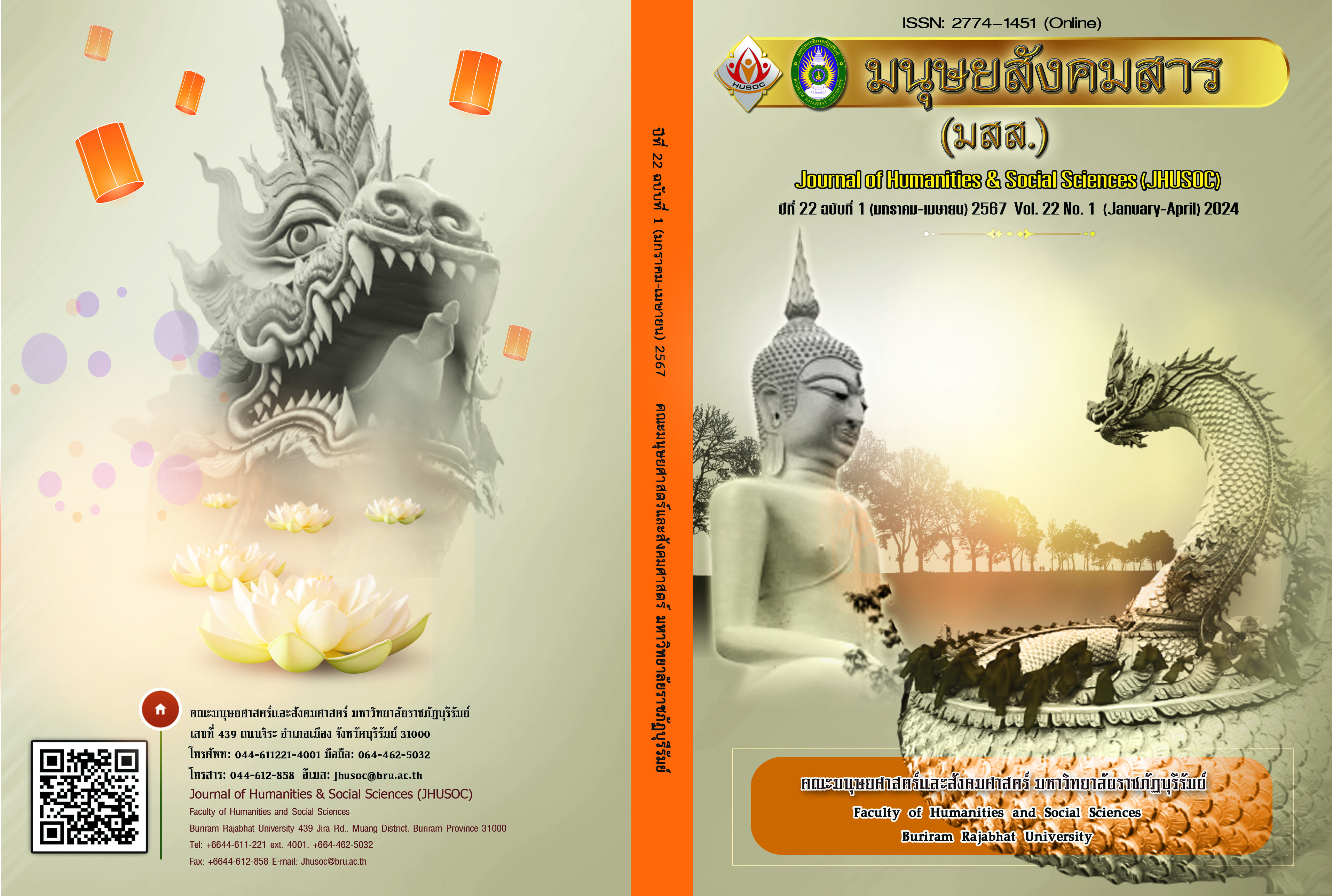วัฒนธรรมการผลิตและการเปลี่ยนแปลงข้าวพื้นเมืองจังหวัดจันทบุรี
Main Article Content
บทคัดย่อ
การวิจัยครั้งนี้มีวัตถุประสงค์เพื่อศึกษาวัฒนธรรมการผลิตข้าวพื้นเมืองและจัดทำฐานข้อมูลทางเศรษฐกิจ สังคม วัฒนธรรมและภูมิปัญญาท้องถิ่น จ.จันทบุรี 3 พื้นที่ คือ พื้นที่เชิงเขา พื้นที่น้ำจืด และพื้นที่ติดกับทะเล ระเบียบวิจัยเชิงคุณภาพ (Qualitative Research) คือ 1) การเลือกตัวอย่างเชิงคุณภาพที่มีความแตกต่างกันในเชิงบริบทของวัฒนธรรม เศรษฐกิจ และภูมิปัญญาท้องถิ่น 2) การสัมภาษณ์เจาะลึกชาวนา 10 คน และ 3) การสังเกตการณ์แบบมีส่วนร่วม ผลการวิจัยพบว่า วัฒนธรรมการผลิตและการเปลี่ยนแปลงข้าวพื้นเมืองในอดีตทั้ง 3 พื้นที่ มีลักษณะหลักคล้ายกัน คือ แรงงานคน และสัตว์ ผลิตเพื่อบริโภคภายในครัวเรือนเหลือขาย ภายใต้ภูมิปัญญาท้องถิ่น ปัจจุบันเปลี่ยนแปลงพลังการผลิตจากแรงงานสัตว์แทนด้วยเครื่องจักร และยังคงผลิตเพื่อยังชีพเหลือขาย ส่วนที่แตกต่างกัน: 1) พื้นที่เชิงเขาของกลุ่มชาติพันธุ์ชอง ทำนาแบบนาไร่หรือ “นาบก” ปีละ 1 ครั้ง และยังคงรักษาวิถีการผลิตดั่งเดิม และรวมกลุ่มเพื่อทำข้าวอินทรีย์ 2) พื้นที่น้ำจืด ทำนาแบบนาสวน ปีละ 2 ครั้ง ควบคู่การปลูกต้นกกทอเสื่อเพื่อขาย และ 3) พื้นที่ติดกับทะเล ทำนาแบบนาสวนปีละ 1-2 ครั้ง ชุมชนและ อบต.หนองชิ่ม ร่วมกันริเริ่มฟื้นฟูข้าวพื้นเมืองเพื่อการท่องเที่ยวเชิงเกษตร
Article Details

อนุญาตภายใต้เงื่อนไข Creative Commons Attribution-NonCommercial 4.0 International License.
เนื้อหาและข้อมูลในบทความที่ลงตีพิมพ์ในวารสารทดสอบระบบ ThaiJo2 ถือเป็นข้อคิดเห็นและความรับผิดชอบของผู้เขียนบทความโดยตรงซึ่งกองบรรณาธิการวารสาร ไม่จำเป็นต้องเห็นด้วย หรือร่วมรับผิดชอบใดๆ
บทความ ข้อมูล เนื้อหา รูปภาพ ฯลฯ ที่ได้รับการตีพิมพ์ในวารสารทดสอบระบบ ThaiJo2 ถือเป็นลิขสิทธิ์ของวารสารทดสอบระบบ ThaiJo2 หากบุคคลหรือหน่วยงานใดต้องการนำทั้งหมดหรือส่วนหนึ่งส่วนใดไปเผยแพร่ต่อหรือเพื่อกระทำการใดๆ จะต้องได้รับอนุญาตเป็นลายลักอักษรจากวารสารทดสอบระบบ ThaiJo2 ก่อนเท่านั้น
เอกสารอ้างอิง
Bundhuwong, C. (2013). Kon Khao Na Kwai in SEA Culture.In P. Kanjanajuntorn (Ed.), Rice and Thai farmers in the Current of Change. (p. 39-67). https://shorturl.asia/7HONK. [in Thai]
Banleng, B. (2009). The changes of the rice cultures of the farmers in Tambon Chaina, Sena District in Phra Nakhon Si Ayutthaya Province. Phranakhon Si Ayutthaya Rajabhat University. [in Thai]
Ketsaming, C. (2016). Rice wisdom and food security in Thailand.Master of Arts. Department of Social Development Administration. National Institute of Development Administration. [in Thai]
Meekhotkong, P. (2015). Rice culture changing of famers in northeast of thailand. Mahachulalongkornrajavidyalaya University. Khon Kaen Campus.
Natsupa, C. (2002). Thai economic history. Chulalongkorn University. [in Thai]
Piemphongsan, P. (2001). Political economy: From Supa Sirimanonto tomorrow, withdraw the thinking system on the way of
Post-marxism/Post-modrenism/New Anarchism. in the Perspective Series Globalization: Theory and Knowledge in the Era of Globalization. Amarin Printing and Publishing. [in Thai]
Rigg, J., & Vandergeest, P. (eds.). (2012). Moving lives in northern Thailand: household mobility transformations and the village. In Jonathan Rigg & Peter Vandergeest. (eds.), Revisiting Rural Places Pathways to Poverty and Prosperity in Southeast Asia. University of Hawai’I Press.
Ritchie, J., Lewis, J., Nicholls, C.M. & Ormston, R., (eds.). (2013). Qualitative Research Practice: A Guide for Social Science Students and Researchers. Sage Publications, Inc.
Samakkhitham, S. (1990). The concept of maracism and the study of changes in Peasant Society in Third World Countries. Social Science Association of Thailand. [in Thai]
Sonphanao, A., Phra Palad. (2016). Rice culture: Inheritance of local wisdom in beliefs and rites of southern Isan communities. Master of Cultural Studies Faculty of Cultural Sciences, Mahasarakham University. [in Thai]
Strauss, A., & Corbin, J. (1998). Basic of Qualitative Research: Techniques and Procedures for Developing Grounded Theory. 2nd ed. Sage Publications, Inc.
Thongdee, I. (1995). Rice: Culture and Change. Matichon. [in Thai]


